|
|
| |
|
kx-t around the world
|
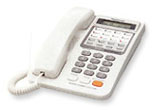 This page is for hard-core Panafans. We have
history, trivia and details that normal people don't care
about. This page is for hard-core Panafans. We have
history, trivia and details that normal people don't care
about. |
Why Wales? Why England?
You may wonder why phone systems sold in the US
by a Japanese company, have been made in the city of Cwmbran
(pronounced "coom-braan") in Wales.
Here's the story:
Originally, KX-T
systems were made in Japan, like most Panasonic products.
In the late 1980s, AT&T and Comdial (the major American
phone system producers) convinced the US government
that Asian-made phones were being sold too cheaply in
the US, and were unfair competition to AT&T and
Comdial.
|
|
|
This was a time
when, for example, a speakerphone for an AT&T Merlin
was a $300 add-on box, so some people felt that AT&T
prices were too high, rather than Asian phones were
not high enough; but AT&T convinced the Feds to
apply huge punitive "anti-dumping" duties on most Asian-made
business phone systems.
This would have
approximately tripled the price of Panasonic phones,
and quickly kill their business. But Panasonic isn't
stupid. They set up KX-T assembly lines in Britain,
first in Birmingham, England, and then in Cwmbran, Wales.
And since Great Britain is not in Japan or China, Panasonic
escaped the penalty, and thumbed their noses at AT&T.
There were product
shortages for several months, but in the end, the new
assembly lines started pumping out products and Welsh-made
Panasonic prices were pretty close to the previous prices
from Japan.
If you get a
Panasonic phone system in California, some of it could
have traveled from China to Japan to Wales to Panasonic
US HQ in New Jersey to a Panasonic regional warehouse
to a wholesale distributor to a dealer to you, rather
than simply crossing the Pacific.
Voice Processing
Systems are apparently not subject to the anti-dumping
duty, and they are made in Japan. Consumer phone products
are made in several countries.
Some time
in 2001, we believe, the anti-dumping duty expired,
but Panasonic in the WORLD is happy with the phones
from Wales, and will keep getting its phones from there.
|
| |
KX-T in Canada
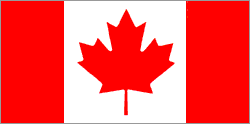 Since
Canada is a former member of the British Commonwealth
of Nations, you might expect that their KX-T products
would come from Britain. Nope. Canada has no anti-dumping
duty on Japanese phone systems, so most or all Canadian
KX-T products are made in Japan. Canada had the KX-TD
digital systems before the US did, but they get cordless
phones after the US. Since
Canada is a former member of the British Commonwealth
of Nations, you might expect that their KX-T products
would come from Britain. Nope. Canada has no anti-dumping
duty on Japanese phone systems, so most or all Canadian
KX-T products are made in Japan. Canada had the KX-TD
digital systems before the US did, but they get cordless
phones after the US. |
 Around the world Around the world
|
|
|
|
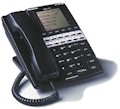 This is a Panasonic "DBS"
phone, made in the USA and sold worldwide. This is a Panasonic "DBS"
phone, made in the USA and sold worldwide. |
|
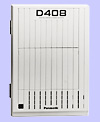 The German KX-TD408 is pretty much
the same as the American KX-TD816. The German KX-TD408 is pretty much
the same as the American KX-TD816. |

This is a KX-TD208,
available in Germany, Britain, Spain, and probably
other countries.
|
|
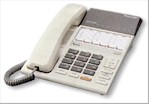 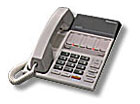
Both of
these phones are the KX-T7250, but they come equipped
with different handsets and cords.
|
 A "DECT" cordless handset from Britain.
It was modified to become the KX-T7885 in the
US. A "DECT" cordless handset from Britain.
It was modified to become the KX-T7885 in the
US.
|
 This ISDN module is available in
Germany. This ISDN module is available in
Germany. |
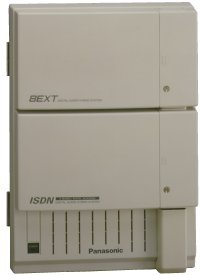
Here's a European KX-TD816
with an ISDN module. |
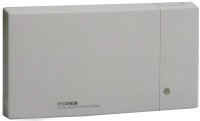
This is a KX-TD412, sold
in Denmark |
|
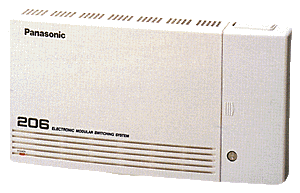
The KX-T206 is an analog control unit, available
in lots of countries, but not the US. Panasonic
puts many different products in this same box.
|
|
|
| The no-display
KX-TG2500 above was
available in blue in Canada, but not in the
US. On this side of the big border, we had the blue 2550 (below), which was not sold in Canada. There's also a blue
2570, apparently sold only at Circuit City. |
|
|
|
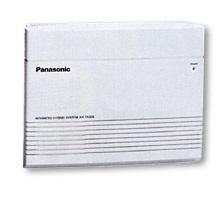
In the US, this is the KX-TA624. In Russia, it's
the KX-TA308RU or KX-TA616RU. In Latin America,
it's the KX-TA308/616.
|
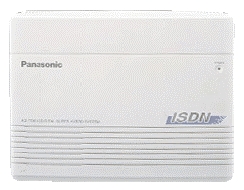
KX-TD612E is designed for the UK. It connects
to three ISDN lines, and can handle three door
intercoms and 12 phones.
|
|
- In some countries,
the KX-T phones come with "fat"
handsets and contrasting-color handset
cords, and in some places they have fat handsets with
matching cords. US and Canadian phones have "K"-style
handsets and matching cords. I'd love for someone
to explain the cultural differences that determine
these things
- KX-TD systems
sold in Australia and in Europe, were able to be connected
directly to ISDN lines long before
American systems could.
- The KX-TD412
system sold in Denmark can handle 4 ISDN lines, with
up to 4 digital and 8 analog phones.
- Britain has
a digital cordless phone system ("DECT"),
operating in the 1880-1900MHz range.
Multiple DECT handsets can be connected to the same
system. Users can make and receive internal and external
calls from anywhere on the premises (within range
of any of the strategically positioned base stations).
- Germany has
an ISDN-ready KX-TD208, and a KX-TD408,
in addition to the KX-TD1232 sold elsewhere.
- The KX-TD208
is also sold in the U.K.
It comes configured with one ISDN2 line (2 channels)
to connect directly to digital lines. Two additional
ISDN2 channels can be connected, for direct connection
to devices such as video telephones, Group 4 facsimile
machines and ISDN2 compatible high-speed modems, to
ensure speedy and efficient data transfer. It also
enables faster connection to the Internet, which offers
its own vast range of information and services. MSN
(Multiple Subscriber Numbering) and DDI (Direct Dialing
In). Each KX-TD extension is able to be called easily
by having its own direct dial telephone number.
- A small analog
KX-T206 is sold in Europe and Latin
America and possibly other areas, but not in North
America. It can handle two lines and six phones, with
two intercom paths; and has some advanced features
like fax detection and DISA that were adapted for
the new KX-TD308.
- There are
at least two versions. KX-T206SBX has one hybrid port
and five single-line telephone ports. KX-T206HBX has
six hybrid ports. A hybrid port accepts either a proprietary
or single-line telephone. KX-T206SBX does not have
a Door Opener Interface. Intercoms are numbered
starting with 21, like the XDPs on the D308. Connections
for phones and door phone are with "DDK" jacks. I
don't know what they are.
- The KX-T96 was the forerunner of the KX-T336.
As mentioned above, the US Government put a big punitive
tariff on small phone systems from Japan, so KME moved
some production to the UK to avoid the tariff. Also,
the 96 was upgraded to the 336, so that it would no
longer be considered a small system, and could escape
the tariff even if made in Japan. Most of the circuit
modules for the 336 have part numbers starting with
"96," revealing their heritage. The 96 was sold in
many countries (Canada, Hong Kong, New Zealand, etc.),
where there was no protective tariff. I think it has
been discontinued. The KX-TD500 is sold in
several versions around the world. Outside the US,
it's similar to the old KX-T336. The US version is
more like a big KX-TD1232.
|
| A
new series of KX-T7300 analog multi-line phones
is available in several countries, but not the US.
The KX-T7320 is a non-display speakerphone with 12 CO
buttons. The KX-T7330 is a display speakerphone with 12
CO buttons. The KX-T7350 is a non-display monitor phone
with 12 CO buttons. The KX-T7310 is a single-line phone
with message/ringing lamp. The KX-T7315 is part of the
series, but I don't know what it has.
|
- The Latin-American
KX-TA308-616 is almost identical
to the American KX-TA624.
- There are
often many variations of Panasonic
phone products for different countries, with different
features and different firmware, and different programming
software. I've learned of at least two dozen versions
of the KX-TD1232.
- For the US
market, KX-TD digital phones come in all-cardboard
cartons, but KX-T analog phones are packed in Styrofoam
inserts inside cardboard cartons. Anyone know why?
- A number
of modules for the digital systems are unavailable
in the US, including the KX-TD174 for 16
single-line phones.
|
|
Footnotes in KX-T history
- KX-T7900 four-line 900MHz cordless
was announced in September, 1993, but apparently never
marketed. Up to eight of the handsets were supposed
to work with the KX-T336900 interface unit, which
connected to the phone system control unit. The 7900
was a flip-phone design, with a 16-character LCD display.
- The original
design for the KX-T7220 non-display
digital speaker phone had 12 programmable buttons.
When the phone was marketed, it had 24 buttons, like
the 7230.
- The eXtra
Device Port
was originally called the Multi-Access Port.
- KX-T2140
was the first KX-T "system" phone. It was a modified
version of the KX-T2220 (Panasonic's first generation
feature phone, from around 1987) with some of the
one-touch dialing buttons dedicated to system features.
It was used with the original KX-T616 control unit
-- a PBX, rather than a hybrid like the later models.
- KX-T30825
was a transitional phone, sold for a short period
around 1990 at the same time as the first generation
of hybrid phones. It had a more modern styling, like
VA-series phones of that period and later 7000 series
phones.
- KX-T123231
was a rare black version of the KX-T123230. It never
even got into the catalog, but we have one in the
AbleComm Panatrivia Museum.
- KX-T7051
was a single-line phone with message-waiting
lamp, produced for the 336 system around 1994. After
a long search, we got two for the museum.
|
| How to decode KX-T model numbers
KYUSHU MATSUSHITA ELECTRIC
CO., LTD - COMMUNICATIONS DIVISION
( EXAMPLE )
KX - F
2130 BX
(1)
(2) ( 3 )
(4)
(1): ABBREVIATION OF KYUSHU
MATSUSHITA ELECTRIC COMPANY'S PRODUCT.
(2): CATEGORY OF PRODUCTS AS
FOLLOWS:
T: TELEPHONE EQUIPMENT
/ANALOG PBX
TC: CORDLESS PHONE
TCD - Dect cordless
TG: GigaRange
cordless phone
TM: ANSWERING MACHINE
TD: DIGITAL PBX
F: FACSIMILE MACHINE
G: MARINE PRODUCT
A: ACCESSORY/OPTIONAL ITEM
J: ACCESSORY/OPTIONAL ITEM
(3): MODEL NUMBERS
(4): SUFFIX TO INDICATE COUNTRY
WHERE PRODUCT IS MARKETED
AG ARGENTINA
BX ASIA, MIDDLE EAST AREA
AL AUSTRALIA
AR AUSTRIA
BE UNITED KINGDOM
BL BELGIUM
BR BRAZIL
C CANADA
CN CHINA
CX - Czech Republic
DM DENMARK
CE EAST EUROPE
E - United Kingdom
FL FINLAND
FR FRANCE
G GERMANY
GR GREECE
HG - Hungary
HK HONG KONG
ID INDONESIA
JT ITALY
LA LATIN AMERICA
ML MALAYSIA
MX MEXICO
NL NETHERLANDS
NZ NEW ZEALAND
NW NORWAY
PD - Poland
PR PORTUGAL
RU - Russia
SN SINGAPORE
SA SOUTH AFRICA
SP SPAIN
S SWEDEN
SL SWITZERLAND
TR or TK - Turkey
TW TAIWAN
TH THAILAND
TK TURKEY
(no suffix) USA
Some
suffix variations are not covered above. The
final "D" in KX-T123211D indicates a major
product revision, and until recently answering
machines and cordless phones did not have
special suffixes. "X" can be used to indicate
worldwide or multi-country distribution.
|
|
|
|
|
MUMBAI
OFFICE:
|
Tel no +91 22-414 6263 ( Hunting line )
|
|
SUBURBAN
OFFICE:
|
Tel
no +91 22-533 4800( Hunting line ) |
|
|

|